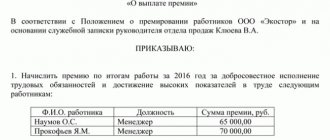An explanatory note to the balance sheet is a document that explains and details information that relates to the accounting policies of an enterprise or business entity. Such a note is included in the mandatory package of accounting documents. The exception to this rule is small businesses, which are exempt from the need to undergo audits.
Let's consider what an explanatory note is and the procedure for drawing up the document.
What is the difference between an explanation and a note to the balance sheet?
It is immediately necessary to clarify that despite the consonance, the explanatory note and explanations to the balance sheet are not interchangeable concepts. If we turn to the official wording, the explanation recognizes the decoding of financial statements and the deciphering of individual forms of documentation:
- Changes in authorized capital;
- Movements of money supply and transactions;
- Other applications and add-ons.
Important! An explanatory note is also called a decoding of financial statements, but done in any form. In particular, this document may contain only general information or detail each line of the report.
Purpose of the document
A note with explanatory content allows you to more fully consider the information presented in the annual reporting of the accounting department. If it is incorrectly or even illiterately drawn up, it may be ignored and not taken into account by the inspection authorities, which may lead to certain problems for the business entity. It is for this reason that it is worth carefully considering the principles and form of filling out this accounting document.
If an audit of a company is carried out, and a note has not been drawn up, then the auditor’s conclusion will indicate that the necessary documents were not completed in full, for which a fine may be imposed on the business entity, as well as the chief accountant of the enterprise may be held administratively liable.
But this documentation is compiled not only in the direction of the inspection authorities. At the request of the founders, even intermediate reporting may require an explanatory document.
So, an explanatory note as a separate accounting document is of utmost importance when submitting reports for consideration by regulatory authorities or management organizations, as it ensures the completeness of the information displayed in the reports.
An integral part of the financial statements is the explanatory note, which is attached to the annual report. The text of the document provides basic information about the organization's performance for the reporting period, characteristics of indicators and a description of their dynamics.
It is also necessary to justify the accounting policy of the enterprise and the effectiveness of its application, in connection with which the note indicates:
- a set of separate rules for accounting for assets and liabilities adopted by the accounting policy;
- reasons for its change and results;
- comparative analysis of the previous period with the reporting period;
- the consequences of adjusting accounting policies in comparison with the previous reporting period;
- results of adjustments for previous periods.
The note contains information and a brief description of the areas and types of activities - current, financial and investment. The document must indicate the main financial indicators that are of great importance and influence on the final result of the activity for the reporting period, as well as the volume of profit and its distribution.
When submitting annual reports, small-ownership enterprises are not required to draw up explanatory notes to the general set of documents. In accordance with the law, such an obligation to the tax authorities is not provided for them. If an organization uses a general taxation system (when revenue is determined by the volume of sales of goods or services), then in this case it is necessary to separately indicate the amount that must be paid to the budget.
The characteristics of the indicators should contain:
- data on the enterprise's fixed assets: their receipt, initial and residual value, period of use and disposal;
- data on intangible assets;
- information about investments and investments;
- information about the general technical level of manufactured products or services provided.
The dependence and dynamics of their indicators can be reflected in graphical form, tabular or supported by diagrams.
An important part of the explanatory note is the analytical research carried out on actual performance indicators, a description of exactly how the property and financial position of the enterprise has changed.
For short-term planning of activities, financiers reflect in the document the coefficients: current liquidity, solvency, and ability to manage with their own funds. With long-term planning, investment flows, their volume, investment period, payback periods are assessed and the time point is calculated when the invested funds will begin to make a profit, and external investors are also assessed.
Business activity is a serious indicator, since sales volumes and income directly depend on the reputation of the enterprise, customer base, availability of export supplies, the degree of use of own funds and the level of fulfillment of planned indicators.
The final part of the note describes the dynamics of key indicators over the past few years, planned long-term and short-term capital investments, as well as other financial and economic measures aimed at improving operations.
(Size: 495.0 KiB | Downloads: 9,509)
The organization's financial statements must give a reliable picture of the organization's financial position as of the reporting date, the financial result of its activities and cash flows for the reporting period (Part 1, Article 13 of Federal Law No. 402-FZ of December 6, 2011). Users make economic decisions based on financial statements. That is why the composition of the statements is not limited to just the balance sheet and financial statements. Explanations are usually prepared for two main forms. Explanations for the balance sheet and financial results statement include appendices to these forms and an explanatory note (clause 5 of PBU 4/99). The appendices to the balance sheet and the income statement are a statement of changes in capital, a statement of cash flows and a report on the intended use of funds (clause 2 of Order of the Ministry of Finance dated July 2, 2010 No. 66n). What is an explanatory note?
Who should include explanatory notes in the annual report
Such a document will be required by all enterprises and organizations submitting financial statements. The note displays information that cannot be included in other reporting forms. In this case, it is necessary to take into account the fact that the information under consideration is of interest not only to the tax authorities, but also to the founders and creditors of the enterprise. For example, if the tax on profit received in the new reporting period turned out to be noticeably lower than in the previous one. To avoid legal consequences and possible claims from the Federal Tax Service, the reasons for this event can be stated in an explanatory note to the prepared reports.
Regulatory framework
Key aspects regarding the need for registration and correctness of explanatory notes are disclosed in the following documents:
- Article 14 of Federal Law No. 402-FZ;
- Order of the Ministry of Finance No. 66n;
- PBU 4/99, which regulates the financial statements of organizations.
The procedure for preparing explanatory notes
It should be noted here that there is no unified template for drawing up this document, so each company develops its own template for such a note.
However, there are a number of points that must be displayed when filling out. Read also: Personal income tax when selling an apartment
Document structuring
The sections included in the explanatory note are indicated here. They are approved by the head of the organization and can be arranged in any order. For example, like this:
- General information;
- Accounting policy;
- Comparative analysis of indicators;
- Balance sheet assessment and analysis;
- Explanations on the articles of the report;
- Information about joint activities with other enterprises;
- Data on individual business segments and regional branches;
- Information on transactions with affiliates;
- Data on pending litigation and disputes with the Federal Tax Service;
- Data on state support and sponsorship.
Initial data
This may include:
- Information about the subject’s commercial activities;
- Analytical data on items of income and expenses;
- Assessment of the current financial situation;
- Important notes and transcripts of significant information.
Additionally, financial and economic stability, the degree of possible risks, and financial independence can be noted.
Sample design
Explanatory note to the balance sheet sample
Analytics
Here is an assessment of the objectivity of this information with explanations. For example:
- How detailed is the information provided?
- Are all factors affecting the financial statements noted;
- Are changes in the material and financial situation indicated;
- How accurate is the assessment of the business activity of the enterprise;
- Have the key points of commercial activity been identified?
- Relevance of analytics for the financial outcome.
Income and expense data
- Form of ownership and name of the legal entity.
- Address.
- Average annual number of employees as of the reporting date.
- Composition of control bodies.
- Information about the founders.
- Amount of capital.
- Information about auditors.
- Availability of licenses.
- Managment structure.
- The amount of taxes paid in the reporting year.
This part displays information about sales volumes and geography of sales markets, the composition of costs, the availability of reserves for future payments, the structure of other income and expenses, and emergency factors. Separately, information is provided on contracts that provide for non-monetary payments: their quantity, share of revenue, methods for determining the value of transferred goods.
This section displays information about the organization’s guarantee and legal obligations, their value and the amount of the created reserve.
- Number of partnership agreements.
- Goals of activity.
- Deposit amount.
- The value of assets and liabilities, profit or loss for the current year.
- Information about the assets used and joint operations.
If the organization is at the stage of liquidation, then the final balance sheet is submitted to the Federal Tax Service. The explanatory note to the balance sheet contains the following information:
- description of the liquidated activity;
- work completion date;
- value of property and obligations to be disposed of;
- movement of funds within the framework of current, investment and financial activities;
- amounts of revenues, expenses, profits, losses before tax, accrued by NPP;
- cancellation of liquidation.
The explanatory note to the balance sheet discloses data on income and expenses received/made during the performance of work, provision of services, as well as the sale of goods. The document indicates specific figures for certain periods (by year). The resulting difference in accounting for management and production costs must be justified. In this case, specific calculations are provided.
The accounting note contains indicators for the current reporting period. In this case, the amount of profit for tax purposes is indicated. If any information is not reflected in the balance sheet, this fact is explained in the note. Let’s say that an enterprise entered into an agreement for the supply of a large consignment of goods, but the transfer and signing of the invoice was delayed. The note also indicates an account that reflects the amount of actual costs for manufacturing the product.
This section indicates the total amount of receipts. The document also provides the amount of non-operating income and the amount of funds received from the sale of fixed assets. Based on these data, the amount of income for taxation purposes is indicated. The note explains the reasons for the difference. Other expenses are described in the same way.
This section also lists the specific amount received in the current year. The note lists the factors that influenced the financial result. These, in particular, may include commercial, administrative and other expenses incurred and written off relating to the sale of a large batch of finished products produced in the last quarter of the completed year and sold in the first quarter of the period that began.
There is certain information that must be filled out without fail. What data should be filled in?
| First section |
|
| Section 2 | It is necessary to provide information about fixed assets, profitable investments in tangible assets, as well as other non-current assets. In this case, data must be provided for both the current and previous reporting periods. |
| Section 3 | Data on the initial cost of long-term and short-term investments, as well as their changes, must be filled in. Information about investments that are pledged to third parties should also be reflected here. |
| Section 4 | Dedicated to enterprise costs. In this case, it is necessary to provide information about unpaid inventories, as well as about those objects that are the subject of pledge. |
| Section 5 | Is quite large and dedicated to accounts receivable and payable. It should disclose information about: The section must contain information about doubtful debts. In this case, it is also necessary to indicate data not only at the end of the year: it is also necessary to reflect changes during the reporting period. |
| Section 6 | Dedicated to production costs. It contains information about cost of sales, business expenses, etc. Data must be provided for both the reporting period and the previous period of time. |
| Section 7 | It is necessary to reflect data on the amounts of estimated liabilities. In this case, it is necessary to indicate data both at the beginning and at the end of the reporting period. Information on the amount of recognized, settled and excess liabilities must also be provided. |
| Section 8 | Dedicated to securing obligations. Here you need to fill in information about both received and issued security for obligations. In this case, it is necessary to fill out this data for each type of security (pledge, surety, etc.). |
| Section 9 | Dedicated to government assistance. Here you need to disclose data on budget funds received. In this case, you need to indicate their intended purpose. Data must be filled in for both the current and previous reporting periods. |
This is the basic information that must be filled in. In addition to them, you can indicate additional information that is not part of the financial statements, but which may contain useful data.
The rules by which the organization's financial statements are prepared were approved by Order of the Ministry of Finance No. 43n dated July 6, 1999. PBU 4/99 defines the structure of the documentation. An explanatory note to the balance sheet serves as its integral elements. Let's look at this document in detail.
General information
This document discloses the information present in the final accounting documents. The explanatory note to the balance sheet must contain information about:
- Enterprise.
- His financial condition.
- Comparability of information for the current and previous periods.
- Methods of assessment and significant articles of the final documents.
Important point
The explanatory note to the balance sheet should also include a description of the facts of non-application of PBU in cases where their use does not allow a reliable description of the property status and financial results of the company, with justifications.
Otherwise, the relevant circumstances will be considered as non-compliance with the rules and act as a violation of legal requirements.
Accordingly, control authorities can apply sanctions provided by law against those responsible.
In addition to basic data, an accounting note may include information that accompanies the final documents if the management of the enterprise decides that they will be useful to users when making management decisions. Additional information includes:
- Dynamics of key financial and economic indicators of the enterprise over the past few years.
- Planned development of the company.
- Estimated capital, including long-term investments.
- Policy regarding credits and loans, risk management.
- Activities of the enterprise in research and development areas.
- Environmental activities.
The explanatory note to the balance sheet may contain other additional information. If necessary, this data can be presented in the form of charts, graphs or analytical tables.
The document is drawn up according to approved rules. An example explanatory note consists of the following sections:
- Basic information about the enterprise.
- Revenues from sales.
- Expenses associated with the sale.
- The financial result that is obtained from the main activity.
- Other income.
- Other expenses.
- Calculation of income tax.
- Financial result of economic activity.
- Information about accounting policies.
The explanatory note to the balance sheet begins with it. The form of the document is not unified. The company has the right to independently develop the form. The section on basic information about the enterprise should contain:
- Name.
- Actual and legal addresses.
- Date of state registration.
- OGRN.
- Checkpoint.
- TIN.
- Details of the certificate, name of the issuing authority.
The basic information also indicates the number of employees, information on the size of the authorized capital, and main types of activities.
What is stated in the document
Let's briefly go over the main points.
Business entity data
- Full name;
- Organizational and legal form of management;
- Legal address and actual location;
- Information about licenses: date of issue and validity period;
- Information on the number of employees working during the reporting period;
- Founders and authorized capital of the enterprise;
- Details of the legal entity;
- The total amount of taxes paid at the end of the year.
Accounting policy
- The procedure for accounting for assets and liabilities;
- The need to make changes;
- Forecasted consequences;
- A note indicating that the financial statements have been adjusted.
Assets and Liabilities
This section includes several subparagraphs.
Basic tools:
- Initial assessment and recalculation taking into account depreciation at the beginning and end of the reporting period;
- Useful life period;
- Methodology for determining depreciation and the method of displaying this information in accounting;
- Information on the turnover of basic funds: crediting to the balance sheet, writing off, etc.;
- Property undergoing state registration, but already in operation;
- Own types of fixed assets at the beginning and end of the reporting period;
- Leased/borrowed fixed assets in the reporting period;
- Objects with non-repayable value;
- Assets that provide for the fulfillment of obligations in non-cash equivalent;
- Items accounted for as retained earnings.
Production and material stock
- Assessment methodology for each type;
- Possible consequences of changing the assessment methodology;
- Amount and turnover of inventories.
Borrowed funds
- Availability of loans, credits, bills and bonds, indicating the type, amount of debt and repayment terms;
- The rate for the use of borrowed funds;
- Financial costs for borrowed funds included in current expenses.
Investments
- Evaluation of each type of investment;
- The value of securities and other investments encumbered with collateral;
- Information on the transfer of securities to other persons;
- Valuation of debt obligations;
- The amount of reserve allocated for asset depreciation.
Investments and liabilities in foreign currency
- The difference in exchange rates attributed to the financial result and accounted for in another way;
- The official rate dictated by the Central Bank at the time of filing financial statements.
Explanatory note to the balance sheet
Analytical assessment of balance and dynamics
Short term prospects:
- Liquidity forecast - critical, absolute, current;
- Providing with own assets;
- Probability of credit recovery;
- Profitability;
- Financial activity - activity, stability, dependence.
Read also: Accounting for settlements with contractors
Current creditworthiness:
- The volume of money supply in the cash register and in current accounts;
- Losses;
- Existing accounts payable and receivable;
- Loans and credits not repaid on time;
- Debt to the budget: presence or absence;
- Fines - paid and outstanding;
- Analytical assessment of the position of the company's securities on the stock market.
Long term prospects:
- Dependence on external investment;
- Sources of financing.
Profit and loss of the enterprise
- Sales volume of goods or services provided;
- Production costs;
- Available reserves;
- Other items of income and expenses;
- Force majeure affecting commercial activities and their consequences.
Explanations on significant accounting items
This section is completed in cases where there is significant information not shown in the financial statements.
Business activity
- Sales market, including export deliveries of products;
- The company's reputation in the commercial sphere;
- Mandatory implementation of planned indicators and ensuring their stable growth;
- Effective use of own resources.
Change in opening balance
- Reasons for the change: reorganization, new accounting requirements, etc.;
- The magnitude of the current changes.
Affiliates
- A complete list of such persons;
- Criteria classifying an individual or enterprise as an affiliate;
- The nature of partnerships;
- Joint operations, indicating prices for each type;
- Share of assets owned by affiliates.
Conditional factors
- Characteristics of obligations and deadlines;
- Existing uncertainties;
- Dedicated reserves;
- Possible consequences.
Partnerships
- Agreements of simple partnerships;
- Partnership goals;
- The company's contribution to joint activities;
- Volume and value of generalized assets;
- Profit received or loss incurred;
- Data on combined assets and transactions performed.
Report by company segments
- Full list of segments: subsidiaries, dependent companies, unions, associations;
- Revenue from sales to third parties and between segments;
- Financial results;
- Total assets and liabilities;
- The volume of capital investments in fixed assets and intangible assets, including depreciation;
- Share of net profit and financial costs based on the results of joint activities.
Events that occurred after the date of filing the report
- The reasons that led to these events.
- Likely consequences.
State support
- Amount of allocated funds;
- Special purpose;
- Forms of government support;
- Report on fulfilled and unfulfilled obligations.
Environmental component
- Company activities that have a negative impact on the environment;
- Activities carried out to protect the environment and the amount of funds allocated for this.
Information disclosure
- Number of shares issued: fully paid, partially paid, unpaid;
- The par value of securities owned by the issuer and its subsidiaries.
When re-issuing, the following shall be indicated:
- Cause;
- Date of issue;
- Conditions of accommodation;
- Number of securities;
- The volume of investments received.
Information included in the report based on PBU 18/02
- Conditional income tax expense/income;
- Differences that triggered the adjustment of conditional income/expenses;
- Amount of tax liabilities;
- Reasons for changing the tax rate;
- Volume of tax assets and liabilities.
Termination of business activities
- Description of the business activity that will be discontinued;
- Termination date;
- The total value of the company's assets and liabilities;
- Cash flow statement;
- Amounts of expenses and income before taxes;
- Profit and loss associated with disposal of assets.
Read also: How to create a vacation schedule
Other indicators
- Information reflecting the effectiveness of the company’s activities;
- Competitiveness of goods and services in the market;
- Solvency, credit policy and history;
- Information about property held as collateral or in trust.
Explanatory note to the annual financial statements
In accordance with paragraph 1 of Article 13 of Law No. 129-FZ “On Accounting”, organizations are required to prepare financial statements based on synthetic and analytical accounting data.
Please note: In accordance with paragraph 3 of Article 4 of Law No. 129-FZ, organizations that have switched to the simplified tax system are exempt from the obligation to maintain accounting records. At the same time, organizations using the simplified taxation system must keep records of fixed assets and intangible assets in accordance with current legislation.
In accordance with clause 28 of PBU 4/99 “Accounting statements of an organization”, Explanations to the balance sheet and profit and loss statement disclose information in the form of separate reporting forms and in the form of an explanatory note .
The explanatory note is included in the financial statements in accordance with paragraph 2 of Article 13 of Law 129-FZ, along with the balance sheet and other forms of financial statements.









